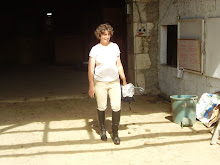Kim is Rudyard Kipling's best character, a lovable little scoundrel that jeers at all that is pompous. Trained by a master spy, he develops his memory and gift for observation by playing what is now known as Kim's game. I used it to help students remember vocabulary before I discovered TPRS. I still play the game with my students, but in a more effective manner.
I go into class with a large covered basket filled with things that I've picked up around the house. I uncover the basket and I start taking items out of the basket one by one. I ask the students if they know what it is, and if they don't know the word in English I tell them. When the basket is empty we count the objects and then I start putting them back in the basket, asking if the students remember the words. Then I cover the basket and ask what is in it. When a student says a name I take out the object and set it on the table. They try to remember everything and I give hints to help them out.
How has TPRS changed the way I play the game? Well, for one thing, I try to set up pairs of objects. A little pink monkey and a big black monkey. A little white shoe and a big red shoe. an old blue toy car and a new green toy car. Constantly repeating the adjectives helps them get a feeling for the place and order of adjectives in English.
And I no longer simply call out the names of the objects. I make a constant running commentary. "What is there in the basket? A little pink monkey? Is there a little pink monkey in the basket? Yes, there is! There's a little pink monkey in the basket."
" A green tractor? Is there a green tractor in the basket? No, there isn't. There isn't a green tractor in the basket."
So my students are not hearing isolated words, but words in context so that they acquire the structures words need to make sense.
Once they know the items in the basket and can remember and identify all of them, you could start a story with an object or several objects. The little pink monkey and the big black monkey can have lots of adventures.
This is a simple game that can be played with very small children, but older students and adults can also enjoy Kim's Game. It's a good way to familiarize them with vocabulary dealing with meals and everything we find on a table, cups, glasses, napkins, etc. It can also be used to teach specific vocabulary such as tools and office material. Doll house furniture is a lot of fun. You could even use a woman's handbag instead of a basket. If you do, be sure beforehand to teach them the expression "everything but the kitchen sink." And then put a miniature kitchen sink in the handbag.
